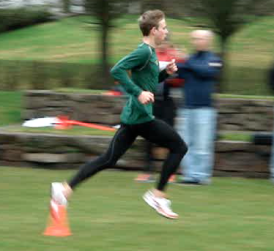We all want to run “better”, but what does that really mean? It will mean different things to different athletes. For most runners, what you do before, after and in between runs, makes the biggest difference in running better. In this running blog series, I’ll cover 5 ways to help you run better, starting with good running form.
Running form. Good running form can be taught and learned. With some consistent effort, we can all make improvements in our running form. Maintaining good form will help you run faster and avoid injury. This is especially important for triathletes. Running after swimming and biking means we’re always running in a fatigued state. The more resilient your running mechanics, the faster and easier you’ll run at all speeds in training and racing.
7 key positions of good running form:
Foot strike: How does your foot strike the ground? Forefoot, midfoot or heel strike are all good and effective. Some runners will run more forefoot for faster runs and races and more heel strike for longer runs and races. For most athletes, there is no need to force yourself to change your foot strike.
The most important concept of foot placement is where your foot lands in relation to your center of gravity (or pelvis). Work to get your foot to land directly under your hips. Striking in front of your hips is called over striding. This is much like putting the brakes on with each step you take.
Stride rate: How frequently does your foot strike the ground? Optimal stride rate is between 85 and 100 strides/minute. (Counting right OR left leg landing over one minute.) This is similar to cadence on the bike as expressed in revolutions per minute (rpms). Smaller people will be able to hold a higher cadence easier than tall people. Cadence needs to be based on your individual body mechanics.
Knee position on landing: You need to land with a slightly flexed knee with a shin angle less than 90 degrees (shin measured against the level ground). This helps absorb the impact stresses on landing and prevents over striding.
Hip position on landing: Hips need to stay as level and stable as possible. Often I see runners’ hips drop with each foot strike. This indicates weakness and instability in the hips and possibly spending too much time with the foot on the ground with little or no elastic return off the ground.
Upper body posture and motion: Your main propulsion comes from your legs, but if your upper body is not working efficiently with your legs, you are probably wasting energy and slowing yourself down. Chest should be relaxed, not elevated. Head slightly tilted forward, with a long neck, eyes looking about 30-40 feet in front of you, not at your feet and not at the horizon. Watch for excess lordosis (back arching and elevated chest) as this can cause stress and pain on the lower back and will inhibit your ability to lift your leg.
Arm carriage. Arms need to be light and compact, focusing on linear motion of the upper arm. The action is to push your elbow back and allow your arm to move forward. Elbows at 90 degrees or less, hands held in a light fist. Excess or lateral arm movement is inefficient and a waste of energy. When running faster, use your arms more aggressively. Relax your arms when running easier and longer.
There is no one perfect way to run, but good runners work to optimize their body and run mechanics. Being light on your feet (minimal ground contact time) and putting a “spring” in your step (activated fast twitch muscle system) keeps you quick and healthy. Running is a linear motion with some spinal rotation to accommodate for each foot strike. Avoid excess rotation or lateral movements.
A good run analysis can help you identify where you need to make improvements and how to achieve better running form. Clients attending my Run Clinic Series are already running faster, stronger and injury free. New session starting November 1! One on one sessions also available, local or remote.
